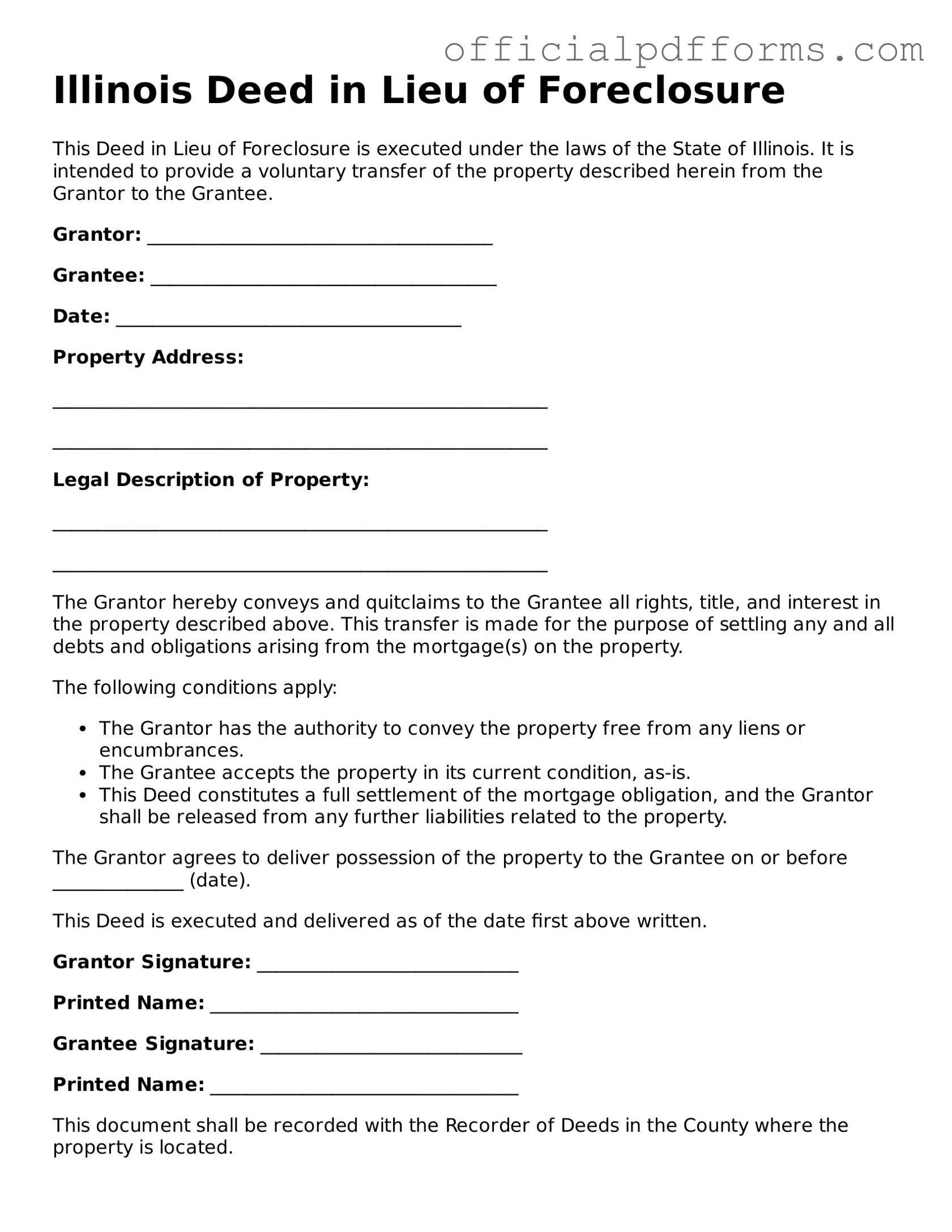Printable Illinois Deed in Lieu of Foreclosure Template
A Deed in Lieu of Foreclosure is a legal document that allows a homeowner to voluntarily transfer ownership of their property to the lender, thereby avoiding the lengthy and costly foreclosure process. This option can provide a fresh start for homeowners facing financial difficulties while allowing lenders to reclaim the property without court intervention. If you're considering this route, fill out the form by clicking the button below.
Access Form Online
